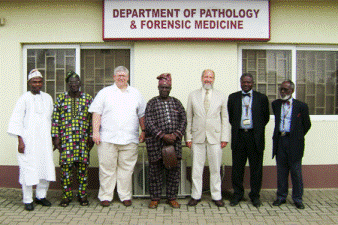Natural Resources, School of

Karl Reinhard Publications
Document Type
Article
Date of this Version
9-7-2019
Citation
Published in International Journal of Paleopathology 25 (2019) 82–90
doi:10.1016/j.ijpp.2018.08.004
Abstract
The Skiles Mummy (SMM), a naturally mummified adult male from the late archaic period of Lower Pecos Canyonlands of South Texas, represents a unique case of care. SMM is an exceptional mummy within this region due to both the retention of a full head of hair, and having a diagnosed case of megacolon, a complication commonly associated with Chagas disease caused by Trypanosoma cruzi. Stable isotopic analysis of his hair is consistent with a diet incorporating of C4/CAM plants with some C3 plants, freshwater resources, and higher trophic level animals. However, the segments of hair most proximal to the scalp exhibited elevated δ15N values. Data from previous research indicate starvation and malnutrition can cause δ15N values to rise. The presence of large fecal boluses in the digestive tract suggest peristalsis ceased in the last four to five months of life, and this, together with results from coprolite analysis, indicate he would not have been able to adequately absorb protein and nutrients during this time. His condition would have rendered him immobile. Following Tilley’s index of care, someone would have had to bring him food resources, as well as attending to his daily needs.
Included in
Archaeological Anthropology Commons, Ecology and Evolutionary Biology Commons, Environmental Public Health Commons, Other Public Health Commons, Parasitology Commons


Comments
Copyright © 2018 Elsevier Inc. Used by permission